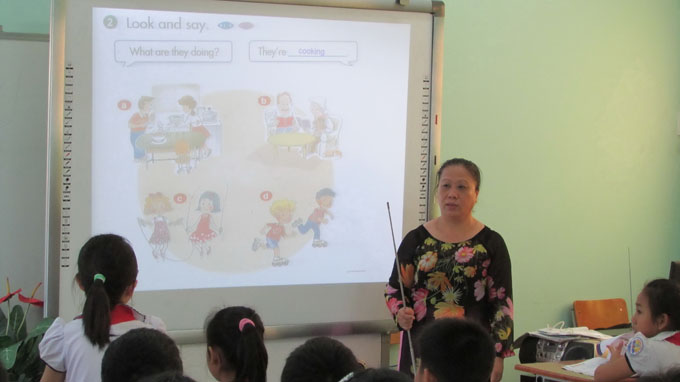A southern Vietnamese province will spend VND437 billion (US$20.8 million) on improving the English command of K-12 students in public schools from now until 2020, according to a plan recently approved by local authorities.
Educators in Long An Province have earmarked the amount for helping school students to be able to speak English after graduating from high school, while most Vietnamese students cannot do so even though English is officially taught from grade 6 to grade 12 in the country.
This is in line with a national English teaching and learning project based on benchmarks from the Common European Framework of Reference for Languages (CEFR). Under this project Vietnam wants most of its students to be able to use a foreign language, especially English, confidently in their study, daily communication, and work by 2020.
The province also aims to teach natural science subjects to K-12 students using English as the medium of instruction, according to Tran Hoang Nhan, director of the Long An Department of Education and Training.
As part of the plan, provincial schools already started teaching English programs built on the CEFR guidelines to fifteen percent of 3rd graders in the province in the 2012-13 academic year, which concluded late last month, Nhan said, adding that all students will have access to the new courses by 2020.
Long An will begin teaching math in English at a specialized high school in 2015 and expand to other subjects later on, the director said.
It also seeks to put all of its English teachers on par with standards the Ministry of Education and Traing (MoET) has set in accordance with the European framework. Accordingly, MoET demands that high school teachers reach the framework’s second-highest skill level (C1), while elementary school teachers must achieve the fourth-highest level (B1) and middle school educators the third-highest (B2).
Nhan said that 500 foreign English instructors will be invited to Long An to help local teachers improve their skills and 100 Vietnamese teachers will be sent to English-speaking countries for further training to meet the CEFR requirements.
CEFR is a guideline put together by the Council of Europe between 1989 and 1996 to provide a method of learning, teaching and assessing which applies to all languages on the old continent. It is now used to describe achievements of learners of foreign languages in other countries as well.



















































